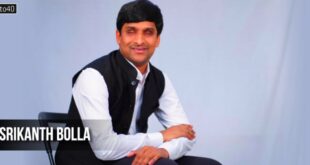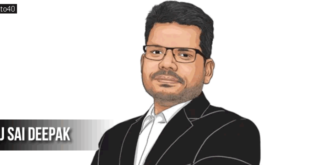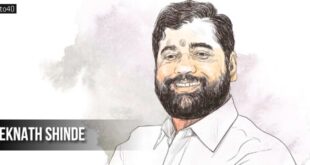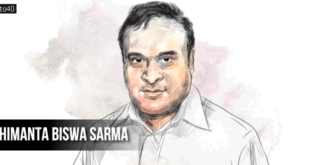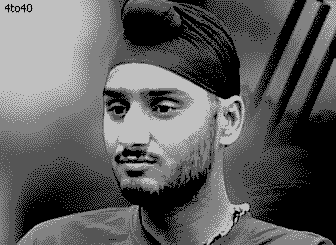 Harbhajan Singh (born: 3 July 1980) is an Indian cricketer. A specialist bowler, he has the second-highest number of Test wickets by an off spinner behind Sri Lanka’s Muttiah Muralitharan.
Harbhajan Singh (born: 3 July 1980) is an Indian cricketer. A specialist bowler, he has the second-highest number of Test wickets by an off spinner behind Sri Lanka’s Muttiah Muralitharan.
Harbhajan made his Test and One Day International (ODI) debuts in early 1998. His career was initially beset by investigations into the legality of his bowling action and disciplinary incidents that raised the ire of cricket authorities. However in 2001, with leading leg spinner Anil Kumble injured, Harbhajan’s career was resuscitated after Indian captain Sourav Ganguly called for his inclusion in the Border-Gavaskar Trophy team. In that series victory over Australia, Harbhajan established himself as the team’s leading spinner by taking 32 wickets, becoming the first Indian bowler to take a hat trick in Test cricket.
A finger injury in mid 2003 sidelined him for much of the following year, allowing Kumble to regain his position as the first choice spinner. Harbhajan reclaimed a regular position in the team upon his return in late 2004, but often found himself watching from the sidelines in Test matches outside the Indian subcontinent with typically only one spinner, Kumble, being used. Throughout 2006 and into early 2007, Harbhajan’s accumulation of wickets fell and his bowling average increased, and he was increasingly criticised for bowling defensively with less loop. Following India’s first-round elimination from the 2007 Cricket World Cup, Harbhajan was replaced by other spinners in the national squad for both formats. He regained a regular position in the team in late 2007, but became the subject of more controversy. In early 2008, he was given a ban by the International Cricket Council (ICC) for racially vilifying Andrew Symonds. The ban was revoked upon appeal, but in April, Harbhajan was banned from the 2008 Indian Premier League and suspended from the ODI team by the Board of Control for Cricket in India (BCCI) for slapping Sreesanth after a match.
He was conferred the Padma Shri, India’s fourth highest civilian honour, in 2009.
Young Harbhajan Singh bolstered his credentials after a successful home series against Steve Waugh’s invincible Australia in 2001. Replacing an injured Anil Kumble, ‘Bhajji’ was crowned ‘Man of the Series’ in performances that stopped the Kangaroos’ record unbeaten run.
Prior to his ascendancy during that series, Harbhajan made a full international debut as a teenager in 1998. After a year in action, few noteworthy displays coupled with a suspect bowling action is all that emerged and he was eventually relegated to domestic cricket. His return after a two year hiatus was one filled with renewed determination and epitomizing captain Sourav Ganguly’s fearlessness. Following his stand-out performance against Australia, he forced selectors to rethink India’s bowling line-up by opting for a two-pronged spin attack in tandem with Anil Kumble. Rarely did his bowling fail to yield satisfactory results, often being the source of bulk wickets for India. He added further repute as a player with his pinch-hitting abilities as a tail-ender. Harbhajan continued to haunt Australia on their return tour to India with another 10-wicket haul at Bangalore in 2004, in a series which India eventually lost. He did face criticism from various circles for being too defensive, a flaw rectified by honing the skill to flight deliveries. Due to his short temper, controversies followed him. One such incident with Andrew Symonds gave rise to a misconstrued racism row. A run-in with Sreesanth in the first IPL season also saw Bhajji banned for the rest of the tournament. On the pitch, he was part of both India’s failure in the 2007 World Cup and later its success in the ICC World Twenty20.
Following spin ally Kumble’s retirement from international cricket, the spin mantle was cast on ‘the Turbanator’ (nickname), especially in series abroad where India usually played with a single spinner. He stuck to his task in India’s series victory in New Zealand in 2009, the country’s first such win against the Kiwis in 40 years. In November 2010, he scaled an unprecedented summit in his batting career when he scored his maiden Test century against New Zealand, helping India to save a match that was slipping ominously out of its grip.
The transition from one spin legend in Kumble to a potential one in Harbhajan is credit in part to the selectors for having an eye on sustenance. But it is Harbhajan’s willingness to improve and his never-say-die spirit that makes him a player whom fans love to praise and the opposition loves to despise.
Highlights
- Harbhajan Singh is currently the most successful off-spinner in Tests.
- In ODIs, he became India’s second most successful spinner after Anil Kumble.
- Harbhajan became the first Indian to take a hat-trick in Test cricket.
- His bowling figures of 15/217 in Tests against Australia became the second best for an Indian behind Narendra Hirwani’s 16/136.
- He became only the 10th player in cricket history to take 350 wickets and score a century in Tests.
- Harbhajan made history as the first No.8 batsman to score successive centuries, a feat which he achieved during New Zealand’s 2010 tour of India.
 Kids Portal For Parents India Kids Network
Kids Portal For Parents India Kids Network
